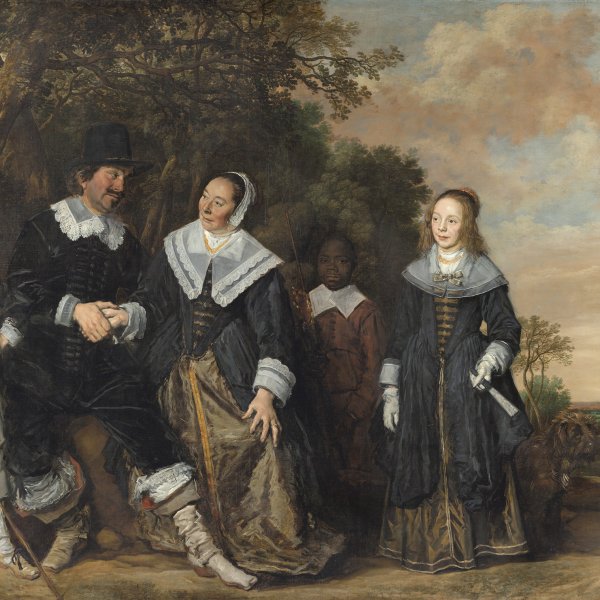Frans Hals
Antwerp, 1582/83-Haarlem, 1666
Frans Hals is considered one of the most innovative figures within the genre of portraiture. Little is known of his early training although the Dutch biographer Arnold Houbraken provided some rather imprecise information on the artist, stating him to have had a conflictive personality. The Hals family moved to Holland between 1585 and 1586, possibly following the capture of Antwerp by the Spanish troops. It has been stated that Hals was taught by Karel van Mander, but his first known works have little in common with that artist’s style. Hals’ early output includes genre scenes with a single figure, treated in the manner of a portrait. From 1610 he is documented as an independent master in Haarlem and one year later executed his first surviving dated work, a portrait of Jacobus Zaffius (Frans Hals Museum, Haarlem). In 1616 Hals painted his first group portrait, The Banquet of Officers of the Civic Guard of Saint George (Frans Hals Museum, Haarlem), in which he himself was a musketeer. Hals occupied an official position in the guild of Saint Luke, was a member of the Reformed church and belonged to the Wijngaertranken, a chamber of rhetoricians whose members composed poetry and organised recitals and literary debates. Hals married twice and four of his sons as well as his brother Dirck worked in his studio. His greatest period was between 1620 and 1630 when he produced portraits of the wealthy Haarlem patrician classes and of merchants and scholars. Hals’ works are characterised by their great vitality and spontaneity, achieved through broad, loose brushstrokes and the application of the pigment directly onto the canvas. From 1640 his commissions diminished notably in number, probably due to a change of fashion among the wealthy classes, who began to prefer a more detailed, precisely painted style. Burdened with debts, which became heavier during the crisis of 1650, in the last years of his life Hals received a municipal pension. He died in Haarlem in 1666. Hals was rediscovered and highly appreciated by French painters of the second half of the 19th century, who admired his naturalism.





